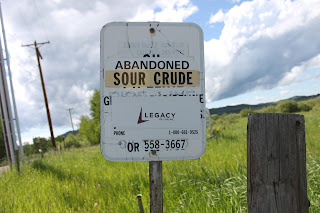The Green Revolution is Over
By B. McPherson
Statement from the US Environmental Protection Agency 2010
An Indian court has ruled that the banned pesticide
endosulfan can be exported in spite of the government’s ban on its manufacture,
sales and usage. With a cavalier disregard to other people’s safety, one of the
chief justices was quoted in the Environmental Justice Foundation web page:
Chief Justice S H Kapadia said, “Our main concern is that we don’t want our people to suffer…Why should this material lie on Indian soil? If some countries are willing to import it, we should go for it.”
Endosulfan was introduced to the world in the early 50s as
part of the Green Revolution. It was widely used on food crops, potatoes and
vegetables. India has been a major producer and user of this chemical but the
government has recently instituted a complete ban on its use, manufacture or
sale. The manufactures have unsold stocks of the pesticide and lobbied the
courts to be able to send the poison to countries that are not respecting the
ban. Canada and the US have agreed to an international protocol for phasing out
the pesticide. The US will continue some use until 2016.
Endosulfan is a long lasting pesticide that takes many years
to break down. Consequently it spreads to many areas not targeted by aerial
spraying. Sampling of polar bears’ blood has turned up traces of it in the
Arctic. There is also concern that the manufacture of endosulfan also results
in the inadvertent production of furans and dioxins, known deadly chemicals.
While many governments maintain that the food crops sprayed
with the chemical are safe to eat, they are less sanguine about the farm
workers and the environmental damage done. It has been alleged in Kerala that
five men who undertook to secretly bury excess pesticide have all died from
endosulfan poisoning.
In India the pesticide has been widely used on a variety of
crops, including cashew trees.
“Endosulfan is one of the most abundant organochlorine pesticides found in the Arctic, and has also been detected in the Great Lakes and various mountainous areas including the National Parks in the western United States, distant from use sites. Because of its presence in remote locations, endosulfan may be considered a persistent organic pollutant that may result in human exposure via the food web.”
This pesticide has been labelled a carcinogen(promotes
cancers), a teratogen(causes birth defects) and a mutagen(changes genes) but
harmful effects have been denied by large pesticide manufacturers in India.
Some have gone so far as to claim that it is a plot by the EU to get the
farmers to buy newer, more expensive chemicals.
What is not in doubt is there are many health issues in the
state of Kerala. While the manufacturers have denied responsibility, some have
offered pensions to the worst affected. For more information on the children
believed affected by this poison, go to The Ecologist.
USA Use of Endosulfan
While the use of this pesticide is being phased out, some
will still be legal to use until 2016. For a more complete list of exemptions
and mitigation measures go to the Memorandum of Agreement between the US
government and a group of chemical producers.
1.
Phased out March 2012 – cabbage, celery, cotton,
cucumbers, lettuce, stone fruits, summer melons, summer squash, tobacco
2.
Phased out March 2013 – pears
3.
Phased out September 2014 -- all Florida use for apples, blueberry,
peppers, potatoes, pumpkins, sweet corn, tomato, winter squash
4.
Phased out March 2015 – rest of US, apple,
blueberry, pepper, potato, pumpkin, sweet corn, tomato, winter squash
5.
Phased out March 2016 – livestock ear tags, pineapple,
strawberry, vegetable crops grown for seed

Comments
Post a Comment